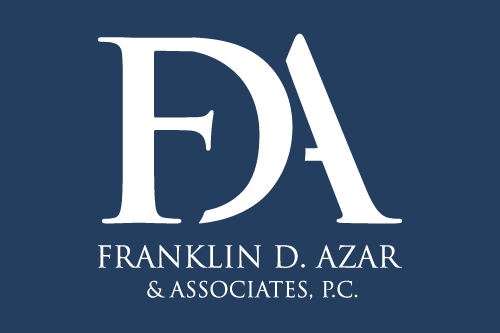Thousands of motorists who financed their car through Wells Fargo over the past decade may be entitled to compensation for being forced to buy insurance they didn’t need. A class-action lawsuit filed by Franklin D. Azar & Associates seeks a refund of the wrongly charged insurance premiums, and class members may be entitled to additional compensation for other damages caused by Wells Fargo’s actions.
WHAT IS FORCE PLACED AUTO INSURANCE?
In a practice stretching from 2006 to 2016, Wells Fargo required customers seeking car loans to take out insurance policies to protect the vehicles’ value in the event of damage. Such policies, known as “force placed insurance,” aren’t unusual in themselves. But the Wells Fargo auto insurance, underwritten by different contractors, tended to be more expensive than the applicant’s own auto insurance — and, in many cases, it turned out to be difficult to waive the requirement, even when the borrower produced proof of insurance.
As a result, auto loan customers ended up paying for duplicative insurance they didn’t need. Even worse, many customers were unaware that the insurance costs were bundled into their monthly loan payments, which were typically arranged through an automatic payment system; the unexpected costs drove loans into delinquency, burdening the borrowers with fees and interest, bad credit scores, and even the loss of their cars to repossession.
According to a report in the New York Times, the scope of the financial upheaval caused by the program was substantial. Over just a four-year period, the force placed insurance requirements led to more than 250,000 loan delinquencies and at least 20,000 wrongful car repossessions. An internal Wells Fargo report estimated that refunding premiums improperly charged to customers would cost around $73 million. But that figure doesn’t account for all the other costs involved – for example, the time frustrated customers spent trying to get the insurance charges removed; dealing with the damage to their credit rating; costs associated with the loss of their vehicles; falling behind in other bills because of the unexpected costs of the car loan, and so on.
HOW DID THIS HAPPEN?
Explaining the misfires at Wells Fargo isn’t easy. The company was fined $185 million by federal banking regulators for creating millions of bank and credit card accounts for customers without their knowledge, in an effort to reach sales goals; more than 5000 employees were fired over the sham accounts. The company has also been accused of modifying mortgages without customer authorization and wrongly penalizing mortgage clients for paperwork snafus that were the company’s fault. And the ongoing controversy over the Wells Fargo auto loan program, which charged more than 800,000 people for car insurance they didn’t need, may be the most perplexing episode yet.
How did one of the world’s biggest banks develop a program that caused so much financial damage to its own customers — and persist in pursuing it, despite growing evidence of adverse consequences, over so many years? At one point, Wells Fargo received a portion of the revenues that the insurance companies collected in commissions for the force placed insurance policies sold to auto buyers, but that arrangement apparently ended five years ago. The larger issue, some analysts have suggested, has to do with a corporate culture that put sales goals ahead of customer needs.
Much of the company’s growth and success in recent years has been attributed to its “cross-selling” strategy, an emphasis on marketing a wide array of products. Customers who expressed an interest in opening a savings account might also be offered a deal on a mortgage or a new credit card or an auto loan. An emphasis on sales volume, and the bonuses and compensation it generated, appears to have outweighed customer complaints about the loan program; in subsequent court filings, many borrowers say their efforts to get the duplicative insurance charges removed were repeatedly ignored by Wells Fargo employees. The company also reportedly skirted state disclosure regulations that required that customers be notified of the insurance charges before they were imposed.
Wells Fargo has pledged to refund premiums to customers who didn’t need the insurance and to work with credit bureaus to repair customers’ records. But making things right is proving to be a challenge. The Wall Street Journal reported that the bank sent out 38,000 “erroneous communications” to customers about the auto loan program. “Wells Fargo has also sent refunds to people who weren’t the bank’s customers; notified those who were harmed of incorrect amounts to be paid; and told people of coming refunds though they had never gotten the insurance,” the article states.
The refund efforts have also been met with skepticism by federal regulators. Although Wells Fargo has indicated that it has set aside $80 million to compensate customers harmed by the program, an analysis prepared by the Office of the Comptroller of the Currency indicates that amount is too low, according to the New York Times, since the scope of the problem may be greater than the bank has admitted.
THE WELLS FARGO CLASS ACTION LAWSUIT
On August 29, 2017, attorneys at Franklin D. Azar & Associates, along with several law firms across the country, filed a class-action lawsuit against Wells Fargo Dealer Services and National General Insurance. In addition to a refund of the wrongly charged insurance premiums, class members may be entitled to compensation for other damages caused by Wells Fargo’s actions, including damage to your credit. Because the case involves claims under the Racketeer Influenced and Corrupt Organizations Act of 1970, class members may also be entitled to triple monetary awards.
If you receive a refund check from Wells Fargo, you should consult with our attorneys to ascertain that you are not signing away your right to additional compensation by cashing it. For more than 30 years, attorneys at FDAzar have protected the rights of individuals who have suffered damages at the hands of large corporations. We have recovered over $1.5 billion for our clients, including $750 million from Walmart in a wage-and-hour dispute that involved litigation in 26 states. Our class-action department is staffed with experienced and knowledgeable attorneys who focus on litigating large, complex cases.
If you were required to purchase forced insurance as part of a Wells Fargo auto loan, or if you have suffered damages as a result of other unfair business practices, data breaches, or corporate misconduct, the class-action lawyers at FDAzar may be able to help. Speak with a member of our team today or contact us here. The consultation is free.
Free case evaluation. Contact us now!



